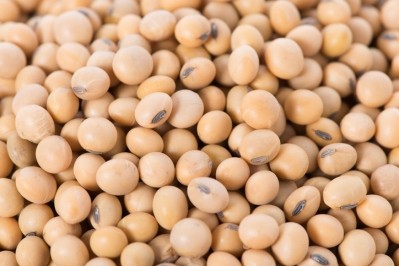EU feed sector warns politicians ‘Don’t conceive of energy policy in isolation’

“Policy amendments from a purely energy perspective might make sense but the consequences for other industries that rely on agriculture raw materials must be captured in impact analysis of modifications of RED post 2020,” Nicolas Martin, policy advisor, FEFAC, told us.
We were talking to him following the release of FEFAC’s position on proposed RED revisions.
The implications of biofuel policy revisions for Europe’s protein supply, in particular, needs to be addressed, so there is no reduction in availability of home-grown protein sources to the EU feed sector, he stressed. There needs to be joined up thinking. “Only this month, at the FEFAC congress, Commissioner Hogan announced his intention to bring forward work on a European protein strategy as part of future CAP reform.”
The EU protein balance sheet recently launched by the EU Commission is a useful tool for comprehensive assessment of the contribution of the EU biofuels production on the EU protein supply, said FEFAC.
“The feed industry’s position on biofuels is not exactly black and white. We support the use of first generation biofuel production. It is useful in the sense that it triggers separation of different components of the plant, thus generating significant quantities of protein-rich co-products such as dried distillers’ grains and oilseed meals for the EU feed market.
“It is the mandatory blending obligation under the existing EU biofuels policy that encourages the sector to produce such co-products. However, we do question whether that rule also results in inflated crop prices. In this ongoing period of low grain prices, it is not so visible but in periods of grain shortages and subsequent price peaks, like back in 2008 and 2009, the food versus fuel debate predominated.
“Therefore, we want the production maintained for first generation biofuels but we want more in built flexibility – we would like to see a more sophisticated mechanism put in place that takes account of poor harvests and favors the food and feed chain during challenging periods,” he said.
An ideal scenario then for FEFAC would be status quo on the use of first generation biofuels with continued use of such crop based sources post 2030. “We don’t believe they should be phased out.” However, the trade group would not be totally against the proposed Commission amendment on a reduction of capping limits from 7% to 3.8% of biofuel crops to EU renewable energy transport supply as it said that revision reflects current input levels.
“First generation biofuels contribution to EU renewable energy transport targets has only ever reached 4.2%, never the allocated 7%, so we can live with that compromise but the biofuels sector might feel somewhat constrained by such restrictions, they may not continue to make investments if there is no room for first generation biofuel production to grow.”
‘Fake’ second-generation biofuel feedstocks
FEFAC’s policy on second-generation biofuels, which the Commission is hoping to phase in over ten years from 2020, is more clear-cut:
“Only feedstocks not suitable for food or feed use should get support through the RED.
“Molasses, quite important from an energy perspective in animal nutrition, but also as a binding agent and used for improving the taste of feed, should not be on the list of second generation feedstocks, which was drawn up DG Energy. We have heard that perhaps beet pulp, again a key ingredient in feed, might be included in the future. As far as we are concerned such raw materials are fake second generation feedstocks, and need to be removed.
“In this context, it is really important that policymakers don’t conceive of energy policy in isolation but try to find the best compromise, taking into account impacts on other sectors.”
He said the feedback that FEFAC has received so far on its position regarding the list of second generation feedstocks is that it makes sense. “The list should reflect the circular economy hierarchy of raw materials – fit for food and, if not, then fit for feed, and, if not, then fit for fuel.”







